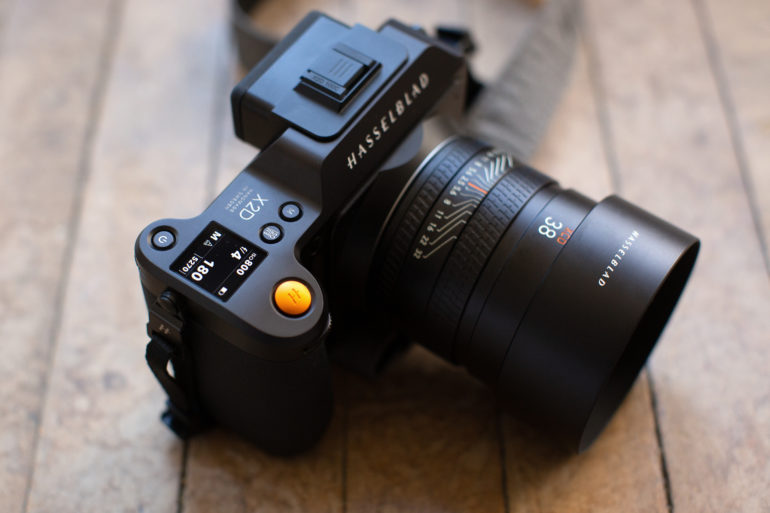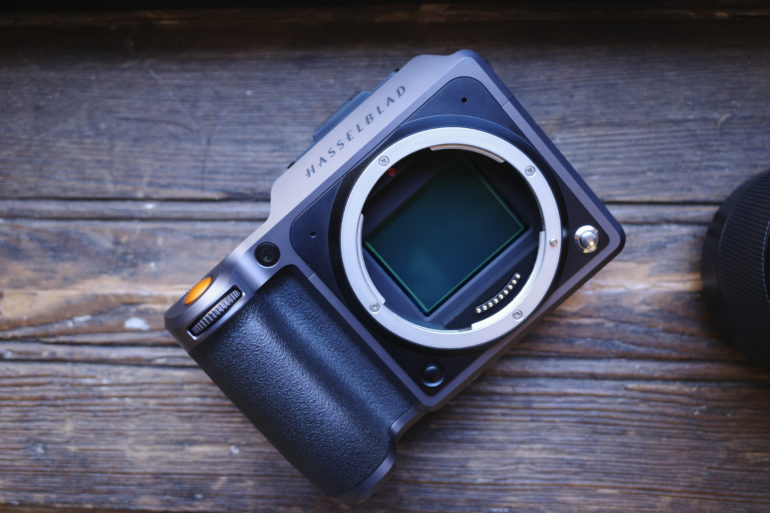
Hasselblad makes some of the most popular medium-format cameras on the market. The company is a legacy brand that drives innovation to new heights. For instance, the Hasselblad SWC was a medium-format camera with a fixed lens, the X1D was the world’s first mirrorless medium-format camera, and the 500EL/ELM went to the moon. Since the company has many new offerings, we have decided to take a look at devices that stand tall today and can be ideal if you wish to transition to medium format from full frame.
Hasselblad 907X CFV 100C
The Hasselblad 907X CFV 100C features a 100MP BSI CMOS, 1TB storage, and comes with a 907X control grip. It also includes a 2.36MP resolution LCD, 15 stops of dynamic range, and an ISO range of 64 to 25,600. Some of its pros include that it works with Nikon’s TTL flash, has beautiful ergonomics, and also produces excellent images. The lenses have a leaf shutter, which means they work better with high sync speed. It is also weather-resistant, and the autofocus is great for a medium-format camera. As we said in our review, “Straight out of the camera, the colors can be great too. That’s to say that in the right situations, it’s easy to fall in love with the JPEGs this camera produces. That’s partially because of the way that medium format sensors render lighting. Full-frame 35mm can’t touch it. I surely do wish that I could have film presets of some sort built into this camera though, as that means that I’d probably rarely ever even edit the RAW files.”
Hasselblad X2D 100C

The X2D 100C is a more modern medium-format camera with a 100MP sensor, a 7-stop in-body image stabilisation, and ISO 64. There is also 3.3fps in a 14-bit colour depth, 3.6-inch 2.36M-dot LCD, and a 5.76M-dot viewfinder. The camera excels at beautiful images, great dynamic range, and a premium build. It also has a user-friendly menu, 1TB of built-in memory, does not overheat, and provides plenty of details when shooting with it. As we said in our review, “True to form, this Hasselblad excels in areas that it performs well. It produces extraordinary images with editorial-like hues without the need to edit. Although it doesn’t have built-in skin softening like other competitors, I didn’t miss it. I appreciate being able to spend more time photographing and minimal time editing. That alone is worth paying for.”
What to Avoid: Hasselblad X1D II

The X1D II is a 50MP camera that was introduced in 2019. The device has a mechanical shutter up to 1/2000, ISO of 100, and 117 AF points. There is a 2,359,296 dot LCD, a 3,686,400 dot viewfinder, and 2.7 fps of burst rate. While the camera offers stunning image quality, a great user interface, and weather sealing, it can’t autofocus well in low light. The autofocus is also slow, even in great conditions, and there is a lack of face detection. The camera is also pricer than the GFX 50R, which makes it easy for one to look at other key players. As we said in our review, ” it would be remiss of me not to remind you that there are cheaper Medium Format cameras out there that are suitable for more than just a few genres of photography. There’s even a full-frame camera on the market now (Sony A7R IV) with more resolution at a cheaper price point. With these two things in mind, the Hasselblad X1D II becomes a hard sell, unless, of course, you simply want the experience of owning a Hasselblad.”

